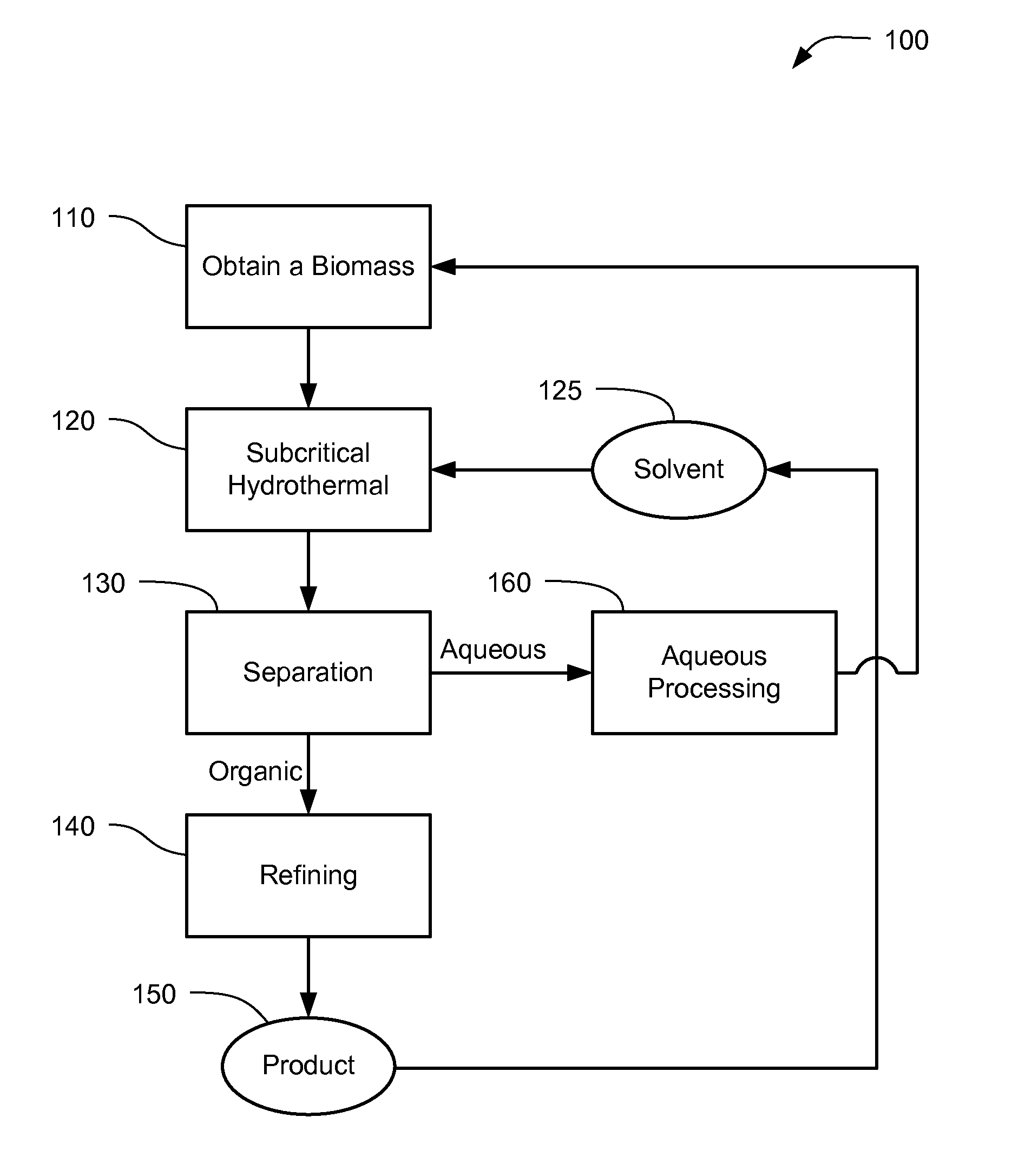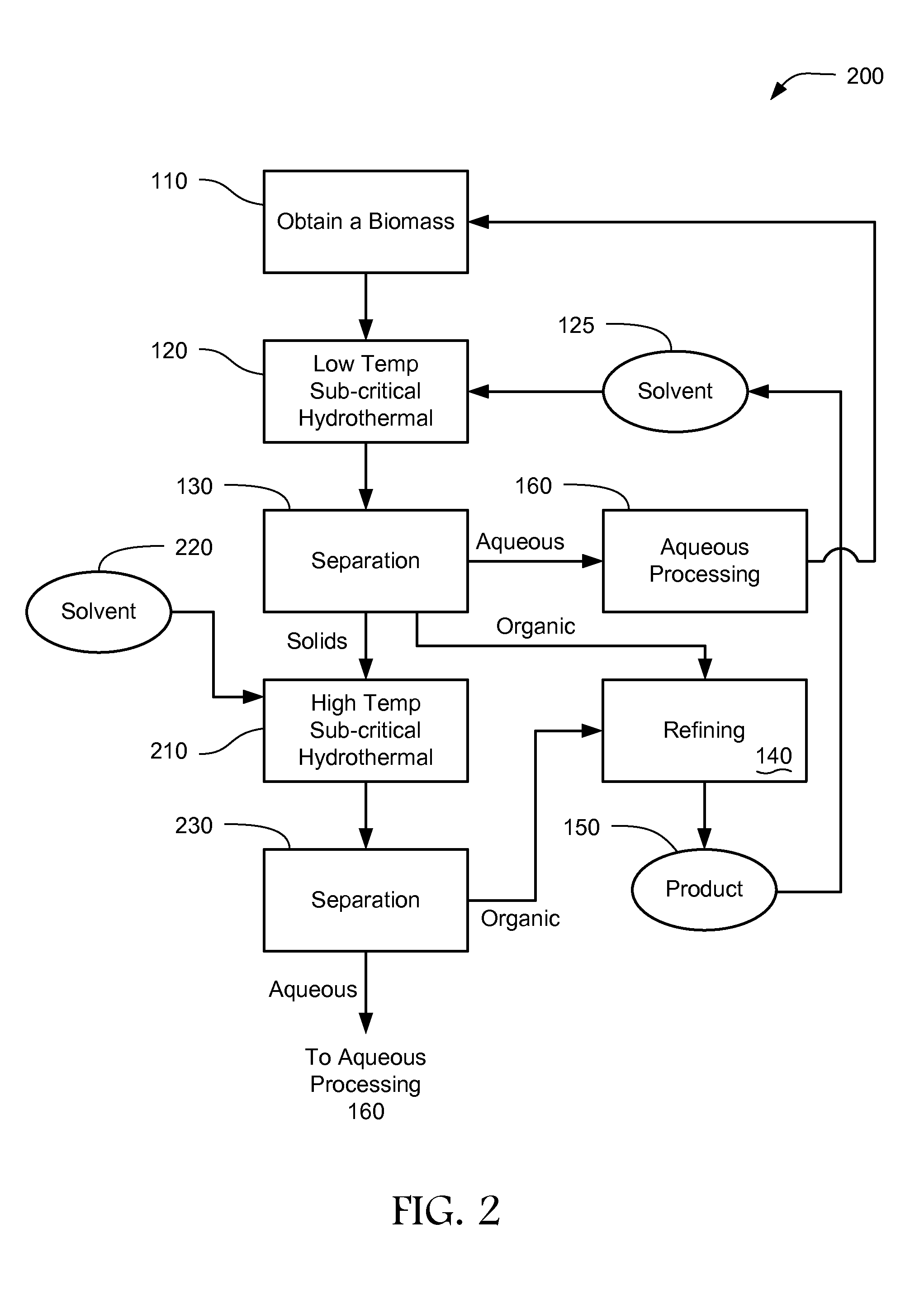Systems and Methods for Hydrothermal Conversion of Biomass
a technology of hydrothermal liquefaction and biomass, which is applied in the field of renewable energy, can solve the problems of insufficient carbon efficiency of algal biofuels by hydrothermal liquefaction, requiring a significant amount of energy to fully dry, and unable to meet the requirements of refining of bio-oils
- Summary
- Abstract
- Description
- Claims
- Application Information
AI Technical Summary
Benefits of technology
Problems solved by technology
Method used
Image
Examples
Embodiment Construction
[0015]The present invention provides systems and methods for synthesizing a low nitrogen concentration organic product from biomass, the organic product being suitable for refining into hydrocarbons such as transportation fuels. The methods subject the biomass together with a solvent to a subcritical hydrothermal treatment that separates the biomass into several phases including an organic phase and an aqueous phase. The organic phase, the product of the process, includes bio-oil, also known as bio-crude oil, derived from lipids in the biomass, while the aqueous phase includes a water solution of the hydrolysis products of biomolecules like proteins and carbohydrates from the biomass, and the water-soluble molecules formed by reactions of these products. The solids are comprised of insoluble proteins and carbohydrates. The solvent serves to extract non-polar molecules while the aqueous phase dissolves nitrogen-containing molecules, leaving the organic phase, comprising the bio-oil d...
PUM
| Property | Measurement | Unit |
|---|---|---|
| pressure | aaaaa | aaaaa |
| temperature | aaaaa | aaaaa |
| temperature | aaaaa | aaaaa |
Abstract
Description
Claims
Application Information
 Login to View More
Login to View More - R&D
- Intellectual Property
- Life Sciences
- Materials
- Tech Scout
- Unparalleled Data Quality
- Higher Quality Content
- 60% Fewer Hallucinations
Browse by: Latest US Patents, China's latest patents, Technical Efficacy Thesaurus, Application Domain, Technology Topic, Popular Technical Reports.
© 2025 PatSnap. All rights reserved.Legal|Privacy policy|Modern Slavery Act Transparency Statement|Sitemap|About US| Contact US: help@patsnap.com



